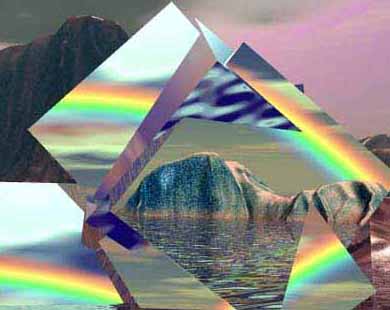
Mu, Lemuria
Mu is the name of a hypothetical continent that allegedly existed in one of Earth's oceans, but disappeared at the dawn of human history. The concept and the name were proposed by 19th century traveler and writer Augustus Le Plongeon, who claimed that several ancient civilizations, such as those of Egypt and Mesoamerica, were created by refugees from Mu - which he located in the Atlantic Ocean.
This concept was popularized and expanded by James Churchward (1851-1936), who asserted that Mu was once located in the Pacific.
The existence of Mu was disputed already in Le Plongeon's time. Today, scientists dismiss the concept of Mu (and of other lost continents like Lemuria) as physically impossible, since a continent cannot sink nor be destroyed by any conceivable catastrophe, especially not in the short period of time required by this premise.
Moreover, the weight of all archaeological, linguistic and genetic evidence is contrary to the claim that the ancient civilizations of the New and Old Worlds have a common origin. So, the very "facts" that the theory was conceived to explain are now seen to be false. Mu is today considered to be a fictional place, and books on the subject are generally found in the "New Age" or "Religion and Spirituality" sections of book-sellers.
History of the Concept
Augustus Le Plongeon
The idea of Mu first appeared in the works of Augustus Le Plongeon (1825-1908), after his investigations of the Maya ruins in Yucatan. He claimed that he had translated the ancient Mayan writings, which supposedly showed that the Maya of Yucatan were older than the later civilizations of Greece and Egypt, and additionally told the story of an even older continent. Le Plongeon actually got the name "Mu" from Charles Etienne Brasseur de Bourbourg who in 1864 mistranslated what was then called the Troano Codex using the de Landa alphabet. Brasseur believed that a word that he read as Mu referred to a land submerged by a catastrophe[citation needed]. Le Plongeon then identified this lost land with Atlantis, and turned it into a continent which had supposedly sunk into the Atlantic Ocean:
-
"In our journey westward across the Atlantic we shall pass in sight of that spot where once existed the pride and life of the ocean, the Land of Mu, which, at the epoch that we have been considering, had not yet been visited by the wrath of Homen, that lord of volcanic fires to whose fury it afterward fell a victim. The description of that land given to Solon by Sonchis, priest at Sais; its destruction by earthquakes, and submergence, recorded by Plato in his Timaeus, have been told and retold so many times that it is useless to encumber these pages with a repetition of it".
Le Plongeon claimed that the civilization of ancient Egypt was founded by Queen Moo, a refugee from the land's demise. Other refugees supposedly fled to Central America and became the Mayans.
James Churchward
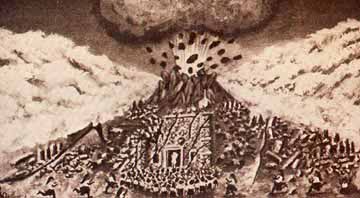
Symbolic drawing made in 1931 by Mayan glyph researcher,
James Churchward,
depicting a cataclysm of earthquakes and volcanoes that
allegedly sank the continent of Mu in the Pacific Ocean.
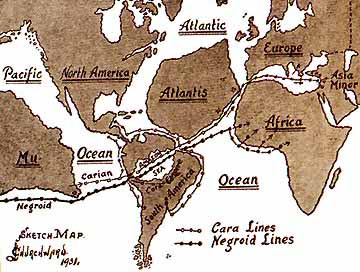
Churchward's map showing how he thought Mu refugees spread out after the
cataclysm through South America, along the shores of Atlantis and into Africa.
Anglo-American explorer, James Churchward was a close friend of Auguste and Alice Le Plongeon. James Churchward, in books such as The Lost Continent of Mu (1931), wrote that the Motherland stretched from the Hawaiian Islands to Fiji and from Easter Island to the Marianas.
Churchward wanted an ancient civilization of his own, and using Le Plongeon's doubtful methodology set about 'discovering' one. His findings were set down in the five main volumes of the Mu series published in from 1926 - 1931. The basic premise was by studying various ancient texts Churchward had discovered the existence of a long lost continent with an advanced civilization that approximately 60,000 years earlier had sunk below the Pacific Ocean after a cataclysmic earthquake. Sixty-four million people allegedly died. The Hawaiian Islands and the Pacific Islands are the remaining mountain peaks of the lost continent.
Volume #1 - The Lost Continent of Mu set out Churchward's theory utilizing a "vast knowledge of science, ancient art and history, mythology and the occult" to recreate the splendor and doom of this hidden antediluvian world. Lemuria or Mu was about 5,000 miles long and 3,000 miles wide. The Garden of Eden was not in Asia but on a now sunken continent in the Pacific Ocean. The Biblical story of Creation came first not from the peoples of the Nile or the Euphrates Valley but from this now-submerged continent, Mu - the Motherland of Man.
Volume #2 - The Children of Mu is the story of the pioneers of Mu. Sixty-three million people lived on the now lost continent of Mu over 200,000 years ago. The children of Mu became the most influential people on Earth. Mu had an incredibly sophisticated government, flowering culture and scientific technology. Much of the Lemurian civilization lived in homes with transparent roofs. They built shelters, made clothing, food, and their own tools. They were free from stress and disease, living in peace for hundreds of years. Their psychic abilities were highly developed - telepathy, astral travel and teleportation making traditional communication devices unnecessary. They were primarily a vegetarian, agricultural, outdoor, organic culture that worked in harmony with nature and the land.
Volume #3 - The Sacred Symbols of Mu, this volume talks about the occult origins of ancient and modern religions. All religions have a common origin in the Sacred Inspired Writings of Mu. The Lord's Prayer is to be found in The Sacred Inspired Writings of Mu. Evidence of the Mu religion dates back 170,000 years. These teachings were taught by Osiris, Moses, and Jesus. Moses condensed the forty-two questions of the Osirian religion into the Ten Commandments. Jesus condensed the text to suit the language of his day. The Last Words of Jesus on the cross were in the language of Mu, 'unknown in Palestine'.
Volume #4 - The Cosmic Forces of Mu - Biological evolution is a myth, There is no such thing as atomic force. All disease can be conquered by using appropriately colored light rays. The Earth's temperatures and seasons have become inalterably fixed in their present state and that the Earth cannot be hurled off into space or drawn into the sun.
Volume is #5 - Second Book of the Cosmic Forces of Mu - Churchward continues to draw conclusions from the ancient documents and lore of Mu to present some startling revisionist theories about the age of the Earth, the nature of mountains and volcanic processes, the Ice Age and Flood.
Possible Evidence of Lemuria
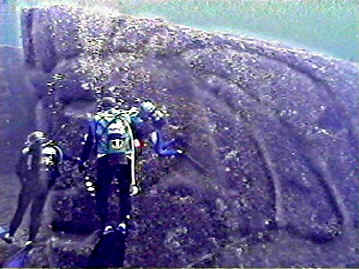
Stone monuments of mysterious origin dot the entire Pacific, from Japan's underwater site at Yonaguni, to cryptic Petroglyphs on Hawaii's Big Island, to Easter Island among sacred and megalithic sites.
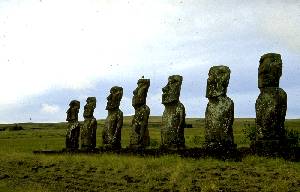
Many believe that Easter Island was part of Lemuria. Its hundreds of colossal stone statues and written language point to an advanced culture, yet it appeared on the world's most remote spot. The legends of Easter Island speak of 'Hiva' which sank beneath the waves as people fled.
Samoans called a similar place Bolutu. It was stocked with trees and plants bearing fruits and flowers, which were immediately replaced when picked. On Bolutu men could walk through trees, houses, and other physical objects without any resistance.
The Maoris of New Zealand still talk about arriving long ago from a sinking island called 'Hawaiki' a vast and mountainous place on the other side of the water.
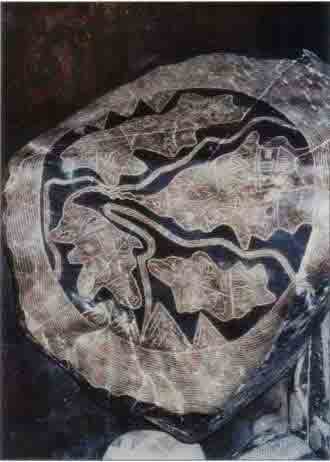
The Ica Stones of Peru may depict maps of the lost continent of Lemuria.
Bron: crystalinks
Voeg toe aan:







